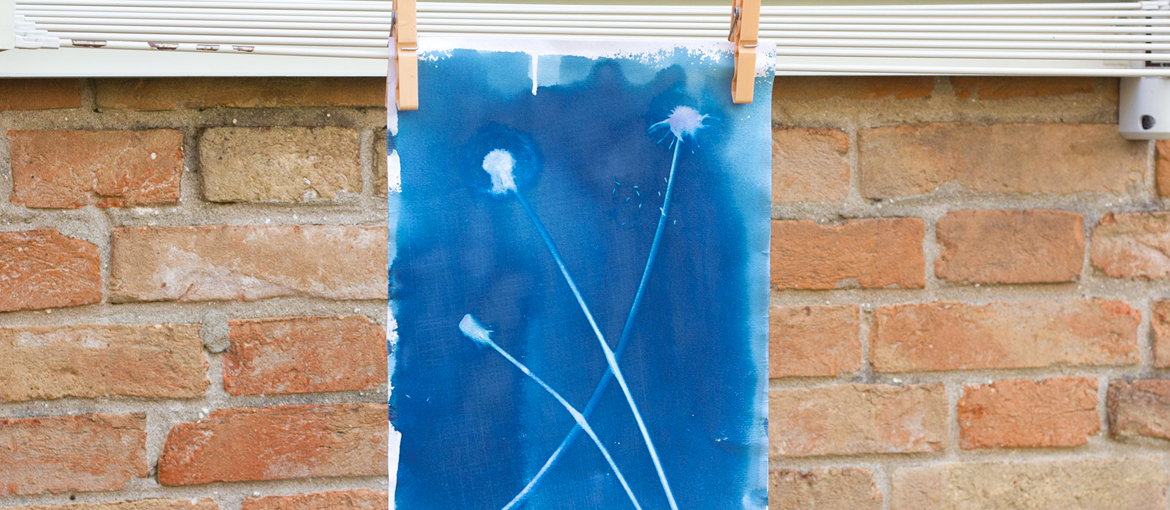“Cyanotype” refers to a method of photographic printing known for producing images in a characteristic Prussian Blue shade.
This technique was invented in 1842 by Sir John Herschel, a scientist and astronomer. He initially used it for duplicating notes and diagrams, a practice that continued into the mid-20th century in architectural fields, giving rise to the term ‘blueprint’ for architectural plans.
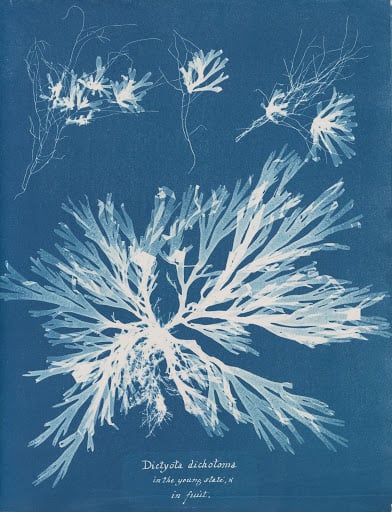
from Part XI of Photographs of British Algae: Cyanotype Impressions, 1849–1850.
One of the earliest adopters for photographic purposes was Anna Atkins, a botanist and photographer. In 1849-1850, she published “Photographs of British Algae: Cyanotype Impressions,” a collection of cyanotype algae images, recognized as the first book containing photographic illustrations.
Creating cyanotypes is a straightforward and fulfilling process that can be easily undertaken at home. Cyanotype chemicals are available in powdered form, or as a pre-mixed solution (if using the latter, the initial mixing step can be skipped).
Ingredients for approximately 50 A4-sized prints:
- 20 grams of green Ferric Ammonium Citrate
- 8 grams of red Potassium Ferricyanide
- 200 ml of water (distilled is preferable)
- A scale
- A measuring cylinder
- Acid-free, thick paper
- Two 100 ml containers and one 200 ml container (amber glass is ideal)
- A basin
- A brush or sponge without metal parts
- A glass plate large enough for the paper
Safety Notes
Cyanotype is a safe home photographic printing method. Ferric Ammonium Citrate and Potassium Ferricyanide are not hazardous to health. Nevertheless, basic safety precautions are advised to avoid ingestion or inhalation. Protect your work area, avoid using food utensils or containers, keep solutions separate from food and beverages, and always use gloves and a mask when preparing and applying the solutions.
Potassium Ferricyanide can become hazardous at temperatures above 300°F or if mixed with a strong acid. However, these conditions are not part of the cyanotype process.
1.Solution Preparation
Start in a well-ventilated area with limited sunlight. Cover your workspace with newspaper or plastic. Dilute the Ferric Ammonium Citrate in 100 ml of water (Solution A) and the Potassium Ferricyanide in another 100 ml of water (Solution B). Store the solutions in a dark, dry place for at least 24 hours. These solutions can be stored for up to 6 months, but are best used within a few weeks.
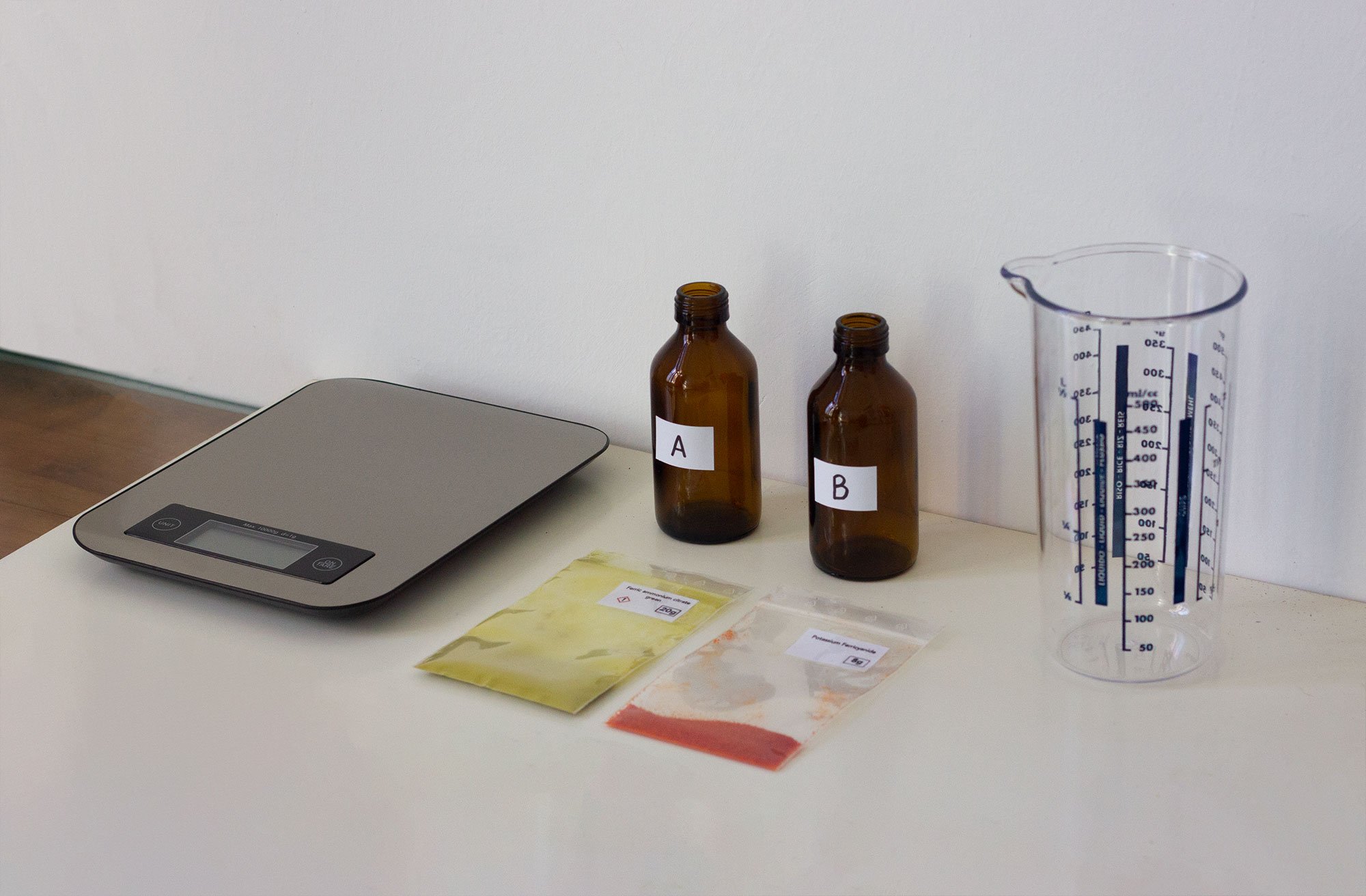
2.Emulsion Mixing
Mix equal parts of Solutions A and B in a dark container. This should be done away from sunlight, but complete darkness isn’t necessary; a dim light, like a 25-watt bulb, is sufficient. The emulsion is sensitive only to ultraviolet rays.
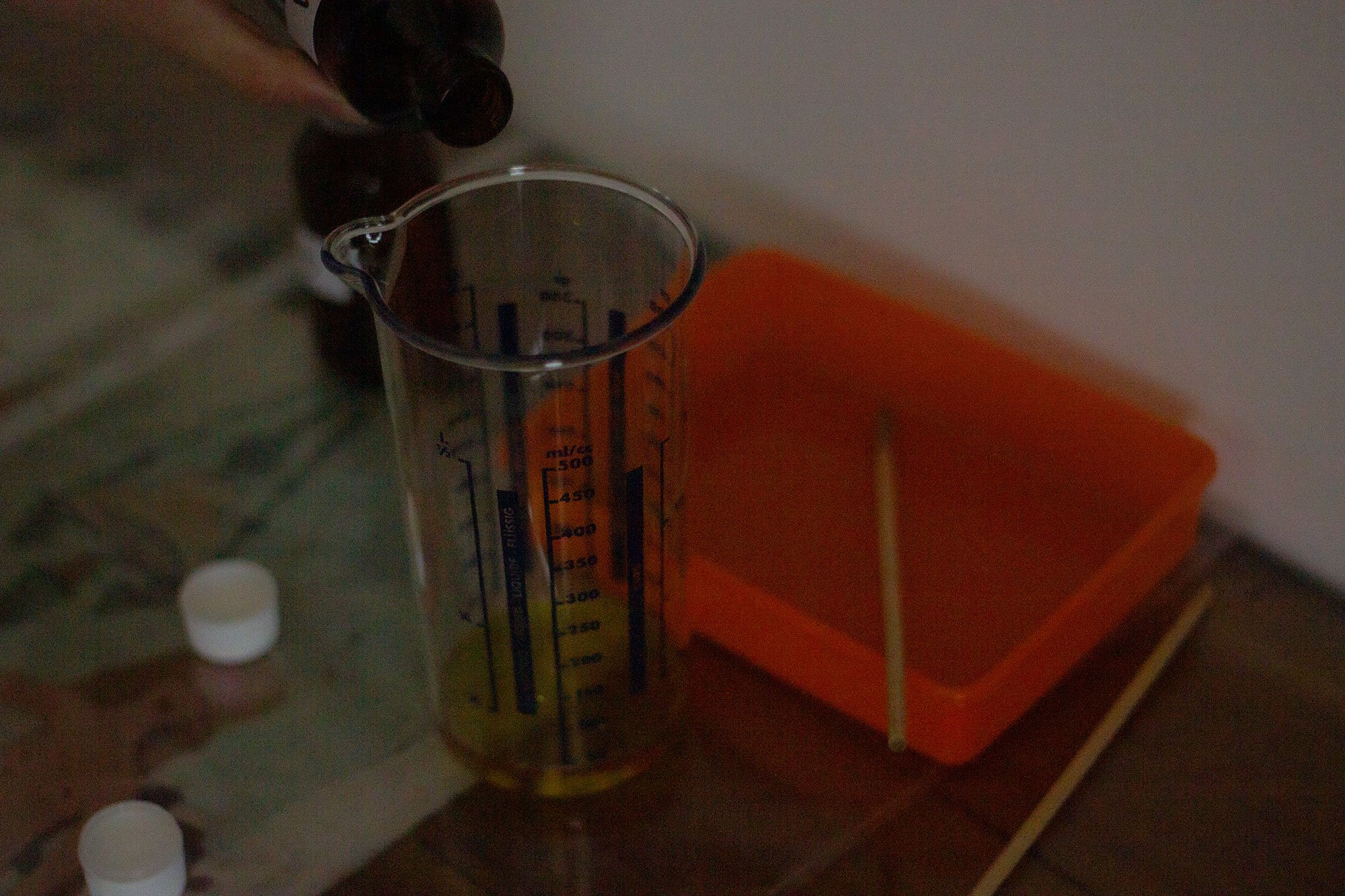
Once mixed, use the solutions quickly to maintain color intensity and sensitivity. Approximately 200 ml of emulsion (100 ml of each solution) is enough for around 50 A4 sheets.
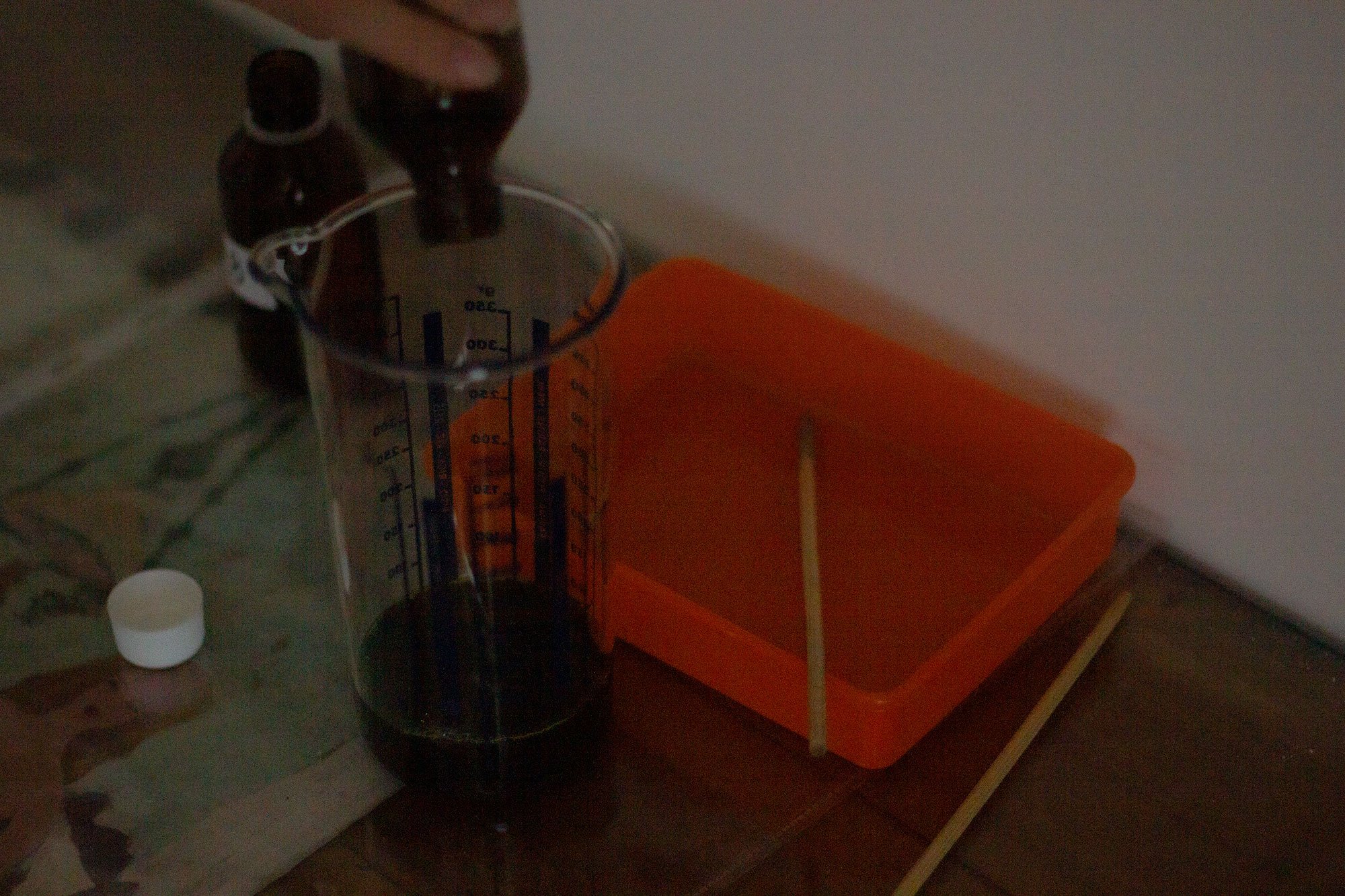
3.Paper Coating
Still avoiding sunlight, pour the emulsion into a tray and use a brush or sponge to evenly spread it over the paper, avoiding streaks or spots.
The best paper for cyanotypes is sturdy, like watercolor paper, but experimenting with different types can yield varied results.
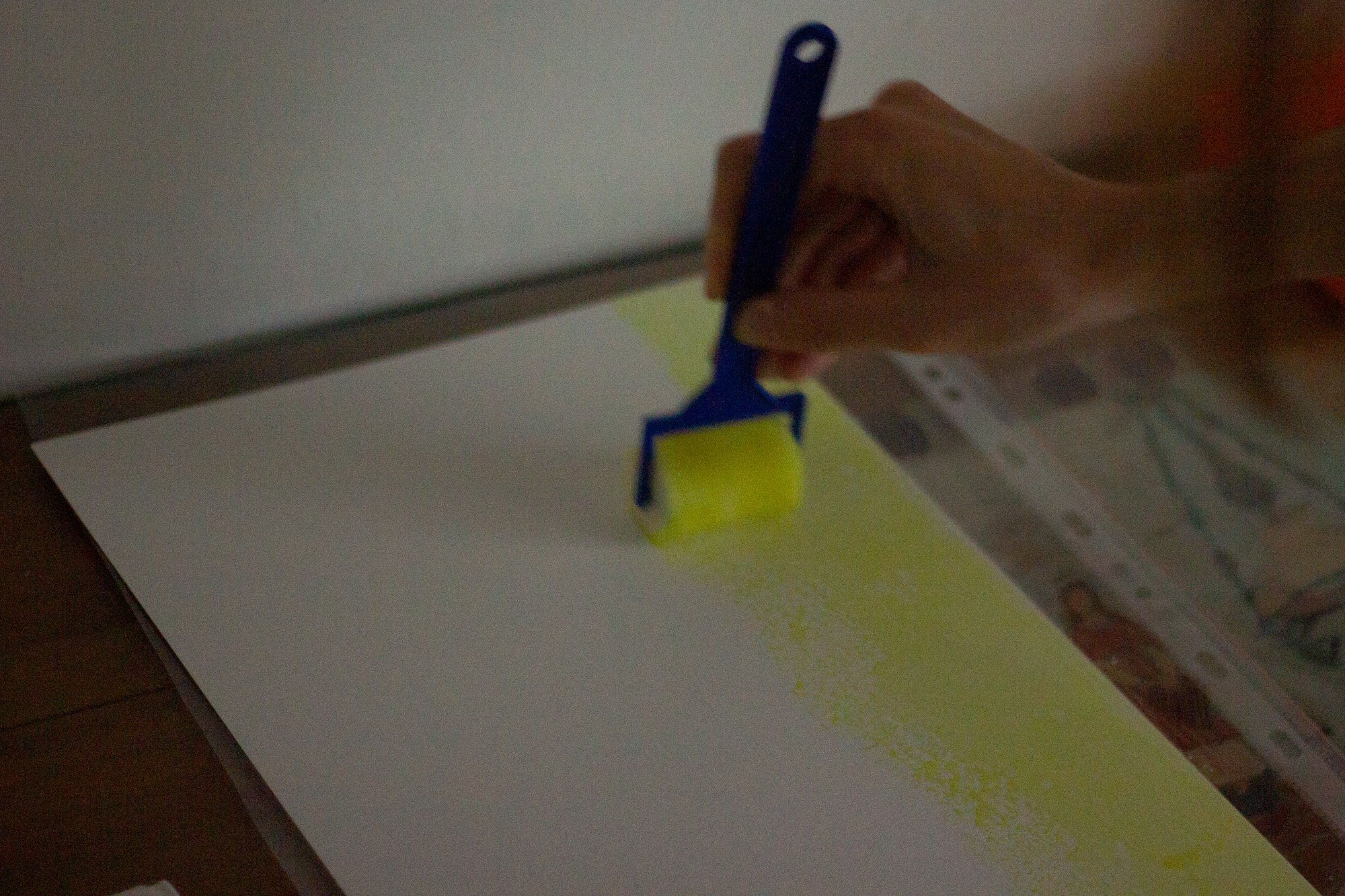
Allow about 30 minutes for the coated papers to dry.
4.Exposure
With the paper dry, start the printing process.
Place the coated sheet in direct sunlight, add the objects for the ‘photograph’ on top, and cover with glass.
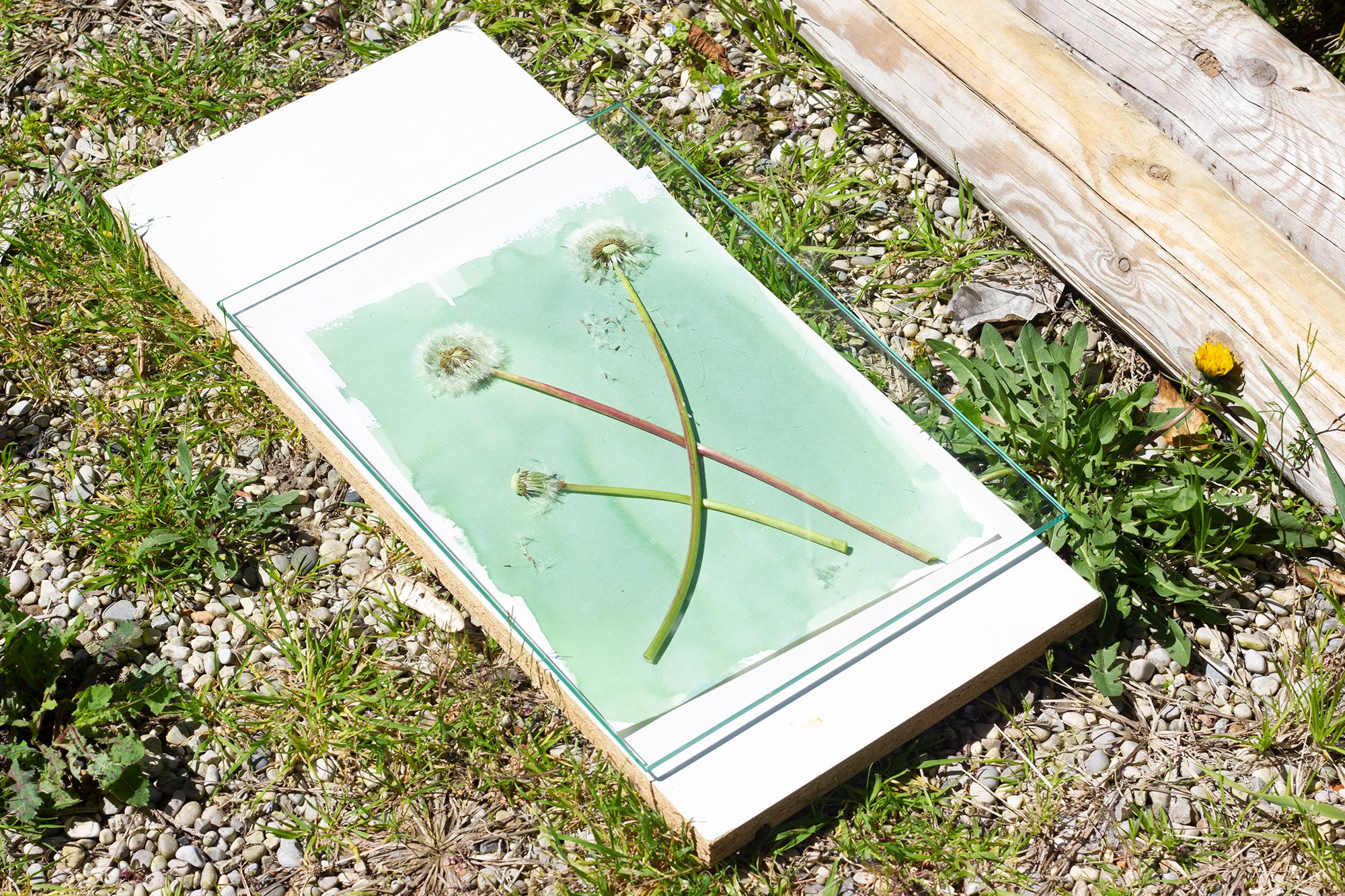
Exposure time is crucial and varies due to sunlight strength, time of day, and season, ranging from 3-20 minutes. Conduct a test exposure, covering parts of the image every 2 minutes.

The print color will darken under the sun, turning to a dull brown when ready.
5.Developing and Drying
After exposure, rinse the print in running water until the yellow tint washes off, revealing a deep blue color. Dry the print in shade for about an hour.
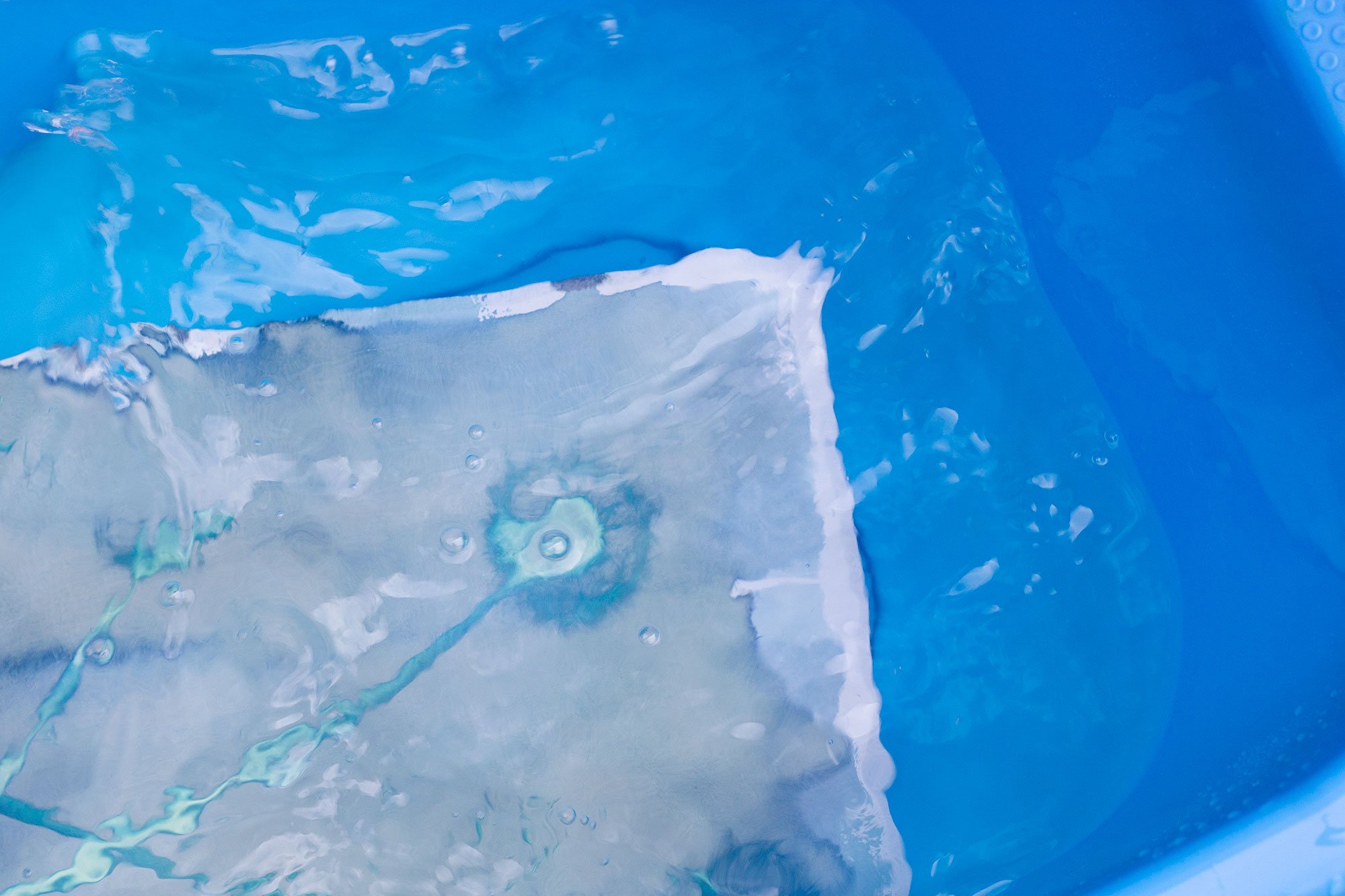
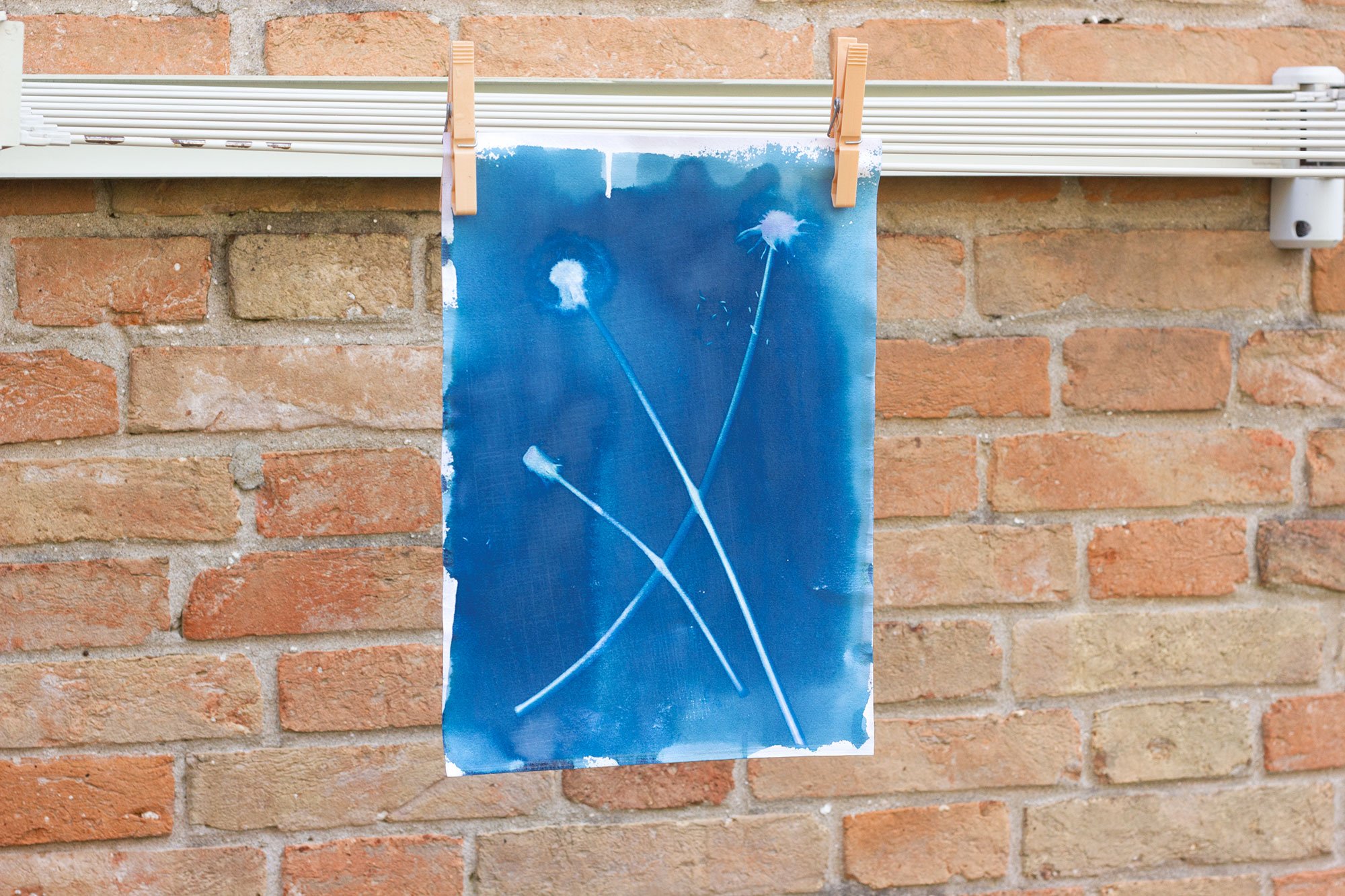
Once dry, the image is permanently set in the cyanotype. Store prints away from direct sunlight, but if they fade, a few days in darkness can restore their color.
6.Disposal
Dispose of chemical residues in small amounts down household drains with plenty of water. Do not discard them in the trash.
Cyanotypes are versatile, suitable for printing a variety of objects like plants, feathers, and textiles. Experiment with different objects and media, like fabric, to explore the effect.
The unique blue hue and delicate outlines of cyanotypes make them distinctive. However, the true beauty of cyanotyping lies in its process and the potential for experimentation.

